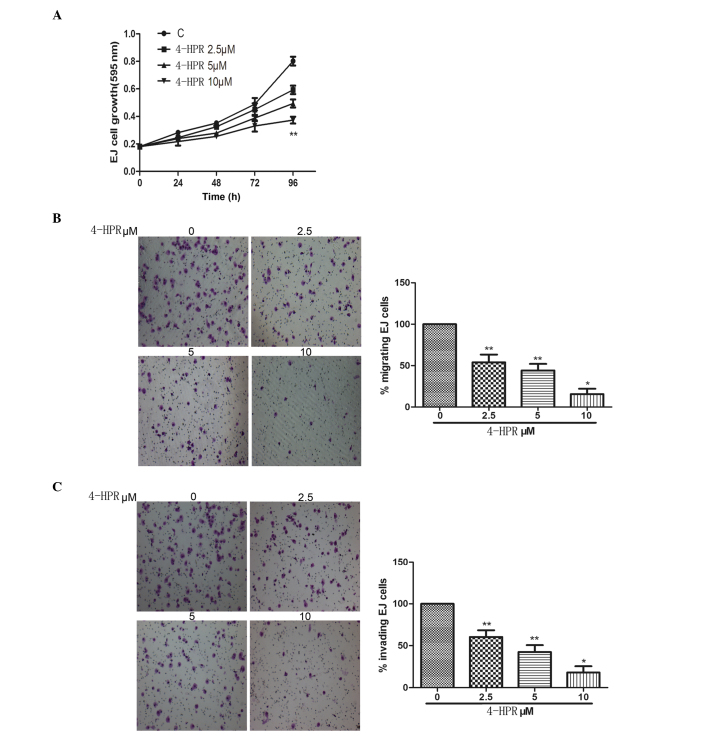Figure 1.
Bladder cancer cell growth, migration and invasion were inhibited by increasing doses of 4-HPR. (A) Cell proliferation, as evaluated by 3-(4,5-dimethylthiazol-2-yl)-2,5-diphenyltetrazolium bromide assay, was significantly inhibited at all the 4-HPR concentrations tested after 96-h exposure. (B) Cell motility through uncoated filters was measured 24 h after plating in the absence or presence of the indicated concentrations of 4-HPR for 48 h. Then, cells in the lower chamber were stained with crystal violet and photographed with a light microscope (magnification, ×100), followed by calculation of the percentage of migrating cells. (C) Invasion assays adopted the same method than migration assays, with the exception of the use of coated filters for 48 h. Data were expressed as the mean ± standard deviation from three independent experiments. *P<0.05, **P<0.01 vs. control. C, control; 4-HPR, N-(4-hydroxyphenyl) retinamide.

